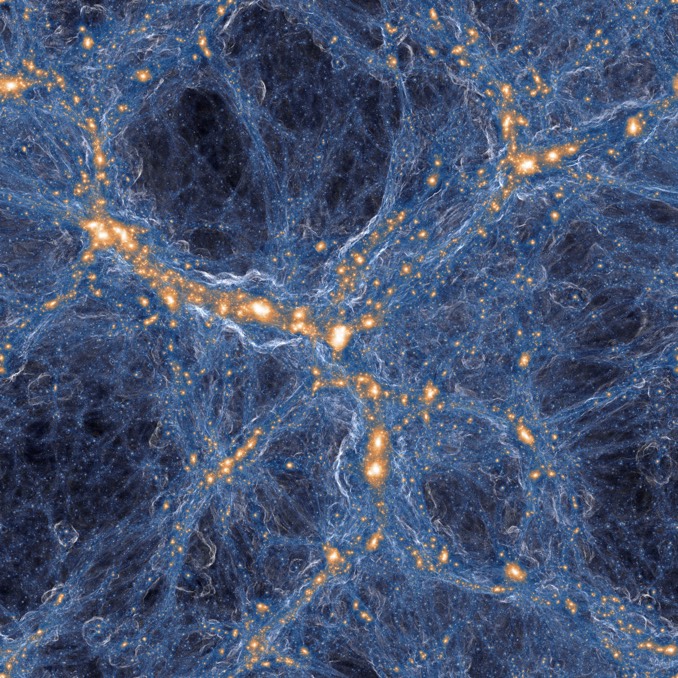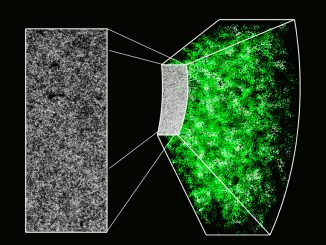
A rare fossil relic of the Big Bang, a vast, pristine cloud of gas made up of material generated during the sudden birth of the cosmos, has been detected, the third such relic discovered to date. The discovery may shed new light on how the first galaxies formed and evolved.
“Everywhere we look, the gas in the universe is polluted by waste heavy elements from exploding stars,” said doctoral student Fred Robert at Swinburne University of Technology. “But this particular cloud seems pristine, unpolluted by stars even 1.5 billion years after the Big Bang.
“If it has any heavy elements at all, it must be less than ten-thousandth of the proportion we see in our Sun. This is extremely low. The most compelling explanation is that it’s a true relic of the Big Bang.”
Robert, Swinburne astronomy professor Michael Murphy and a team of researchers outline their findings in a paper to be published in the Monthly Notices of the Royal Astronomical Society.
The team used two instruments at the W.M. Keck Observatory in Hawaii, the Echellette Spectrograph and Imager and the High-Resolution Echelle Spectrometer, to dissect light from a background quasar passing through the gas cloud. The team targeted quasars based on earlier, lower-resolution, observations that found traces of hydrogen but no heavier elements.
The strategy “allowed us to discover such a rare fossil quickly with the precious time on Keck Observatory’s twin telescopes,” said Robert.
Two other fossil clouds were found in 2011 by Michele Fumagalli of Durham University, John O’Meara, formerly a professor at St. Michael’s College and now the new Chief Scientist at Keck Observatory, and Professor J. Xavier Prochaska of the University of California, Santa Cruz. Fumagalli and O’Meara are co-authors of the paper on the latest discovery.
O’Meara said the first two were “serendipitous discoveries.”
“We thought they were the tip of the iceberg. But no one has discovered anything similar,” he said. “They are clearly very rare and difficult to see. It’s fantastic to finally discover one systematically.”
Said Murphy: “It’s now possible to survey for these fossil relics of the Big Bang. That will tell us exactly how rare they are and help us understand how some gas formed stars and galaxies in the early universe, and why some didn’t.”



